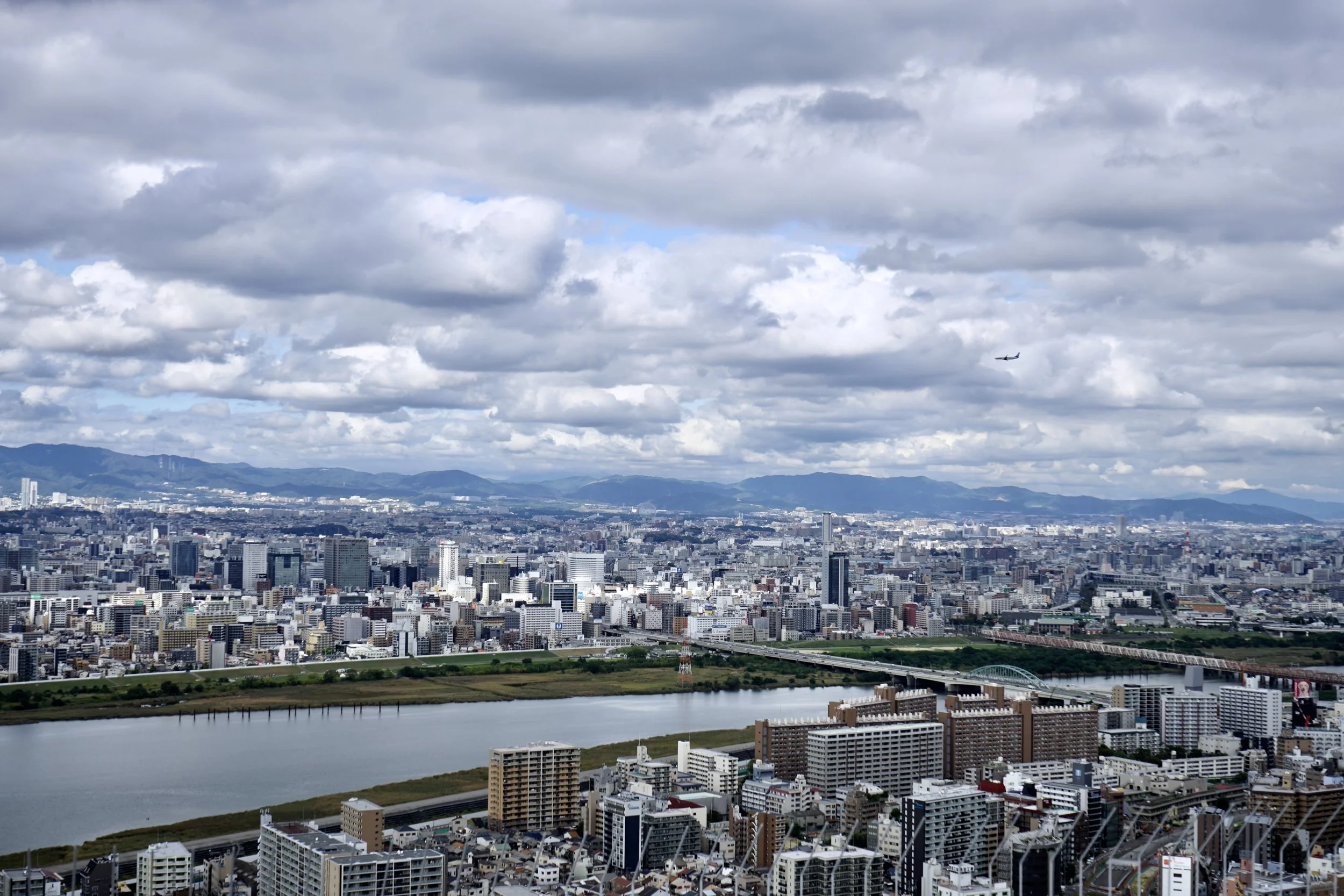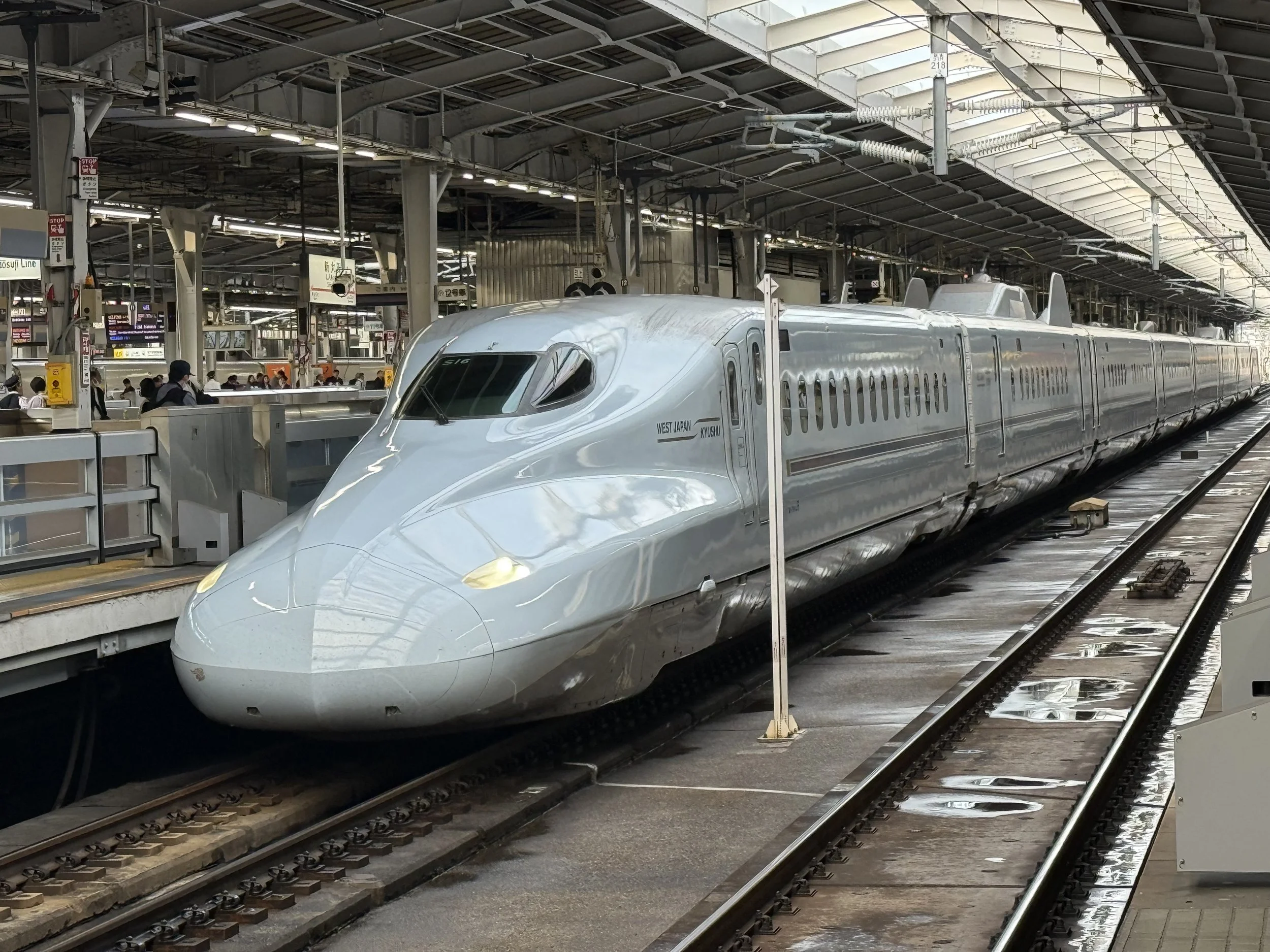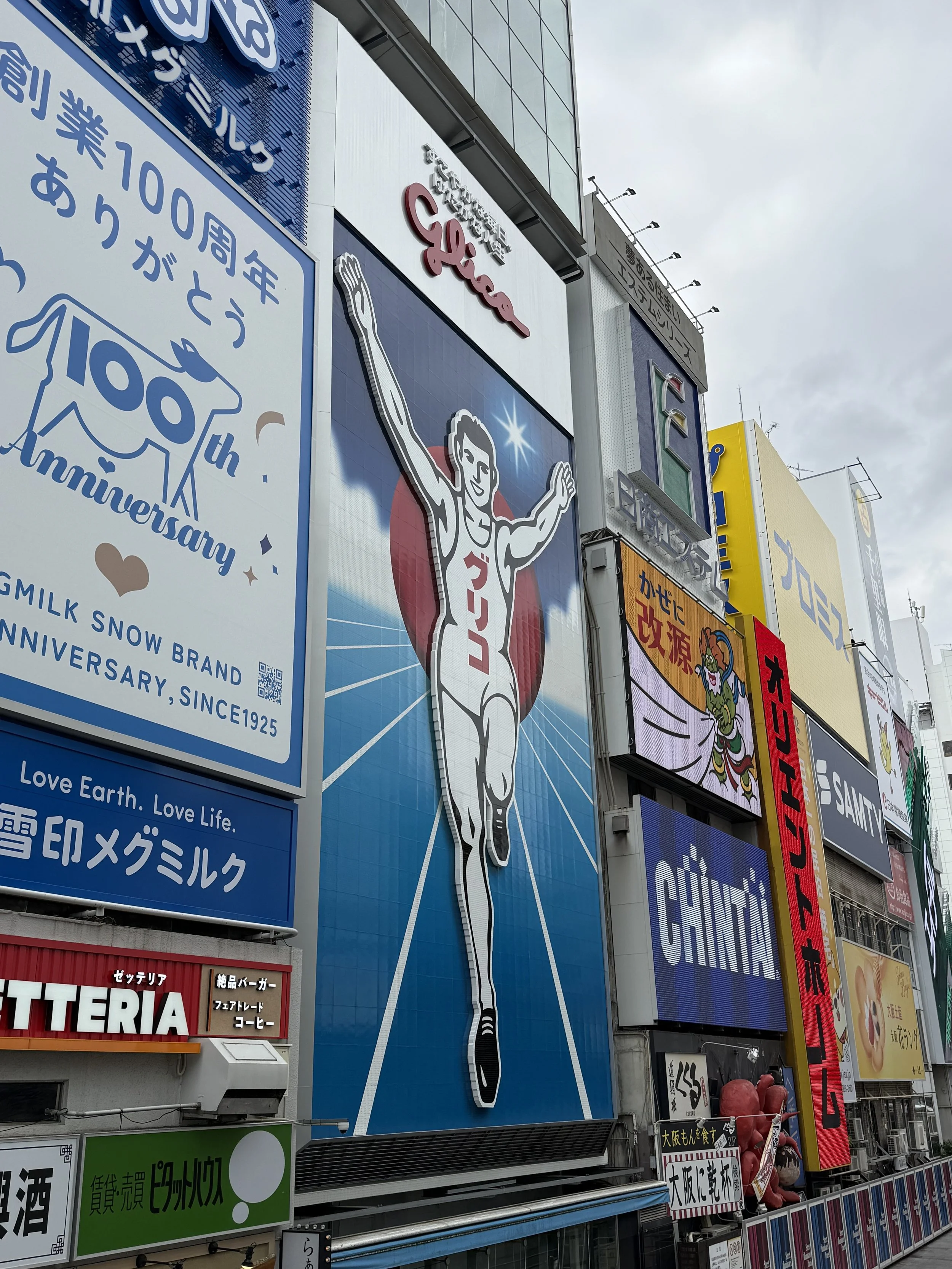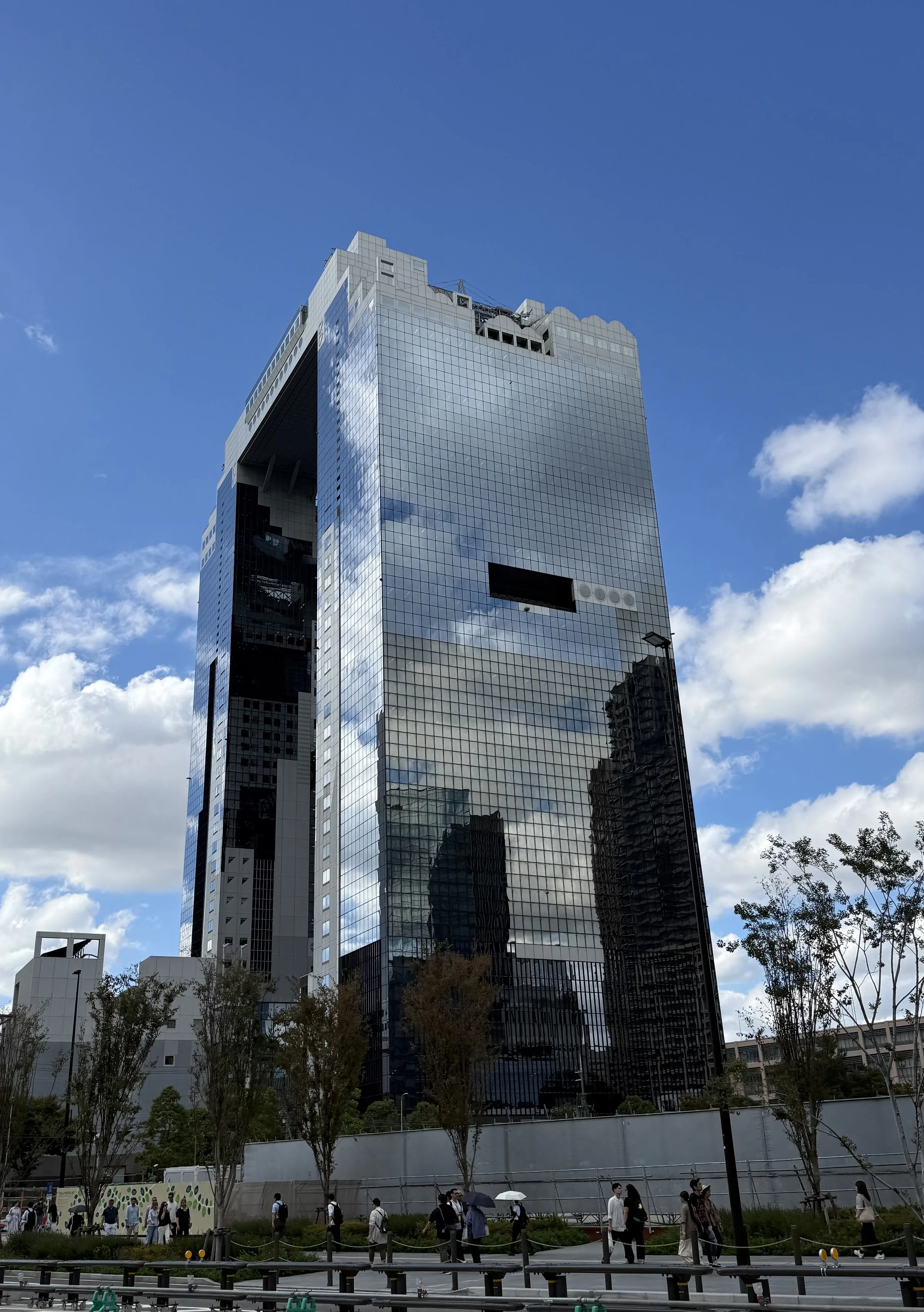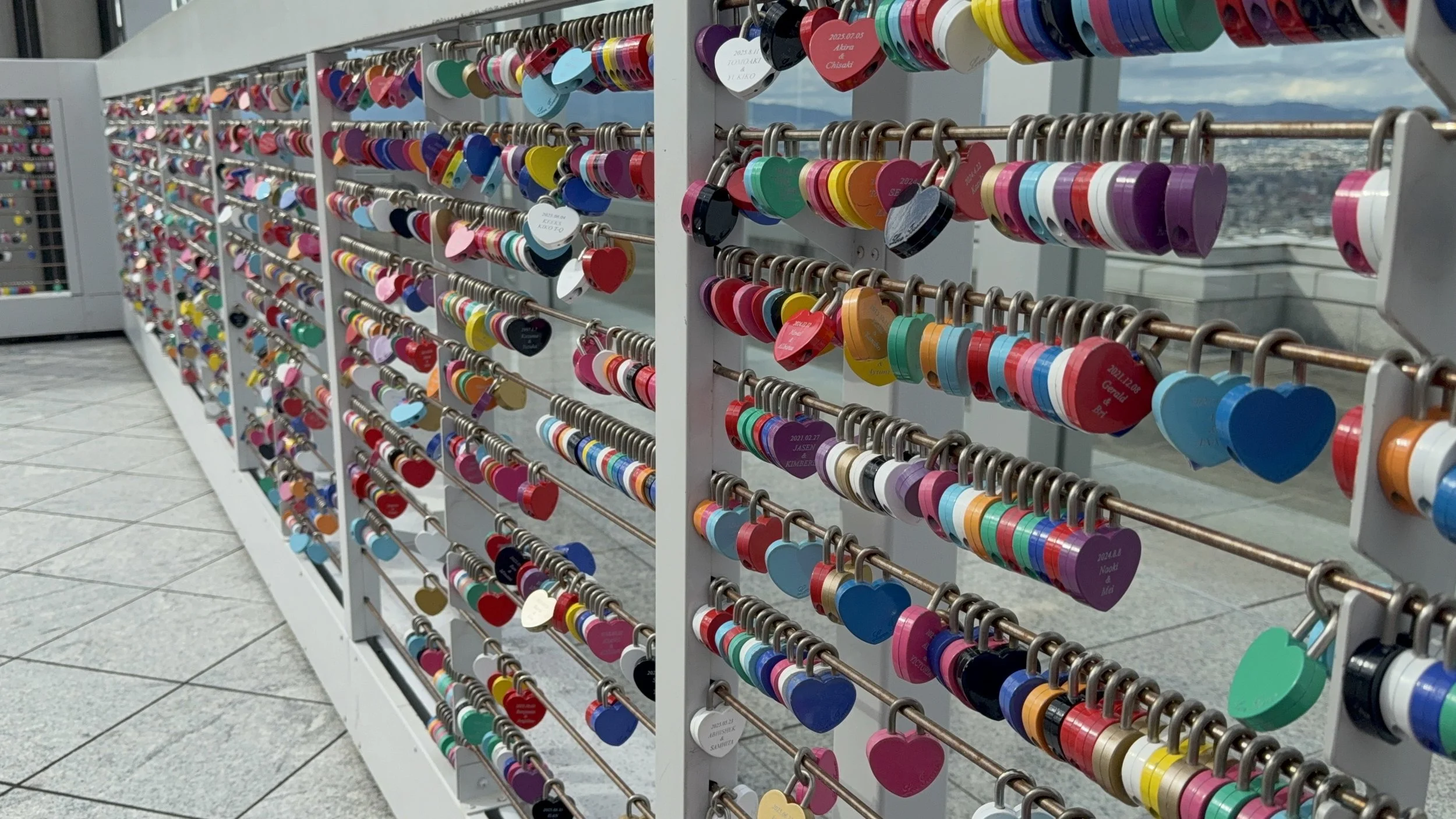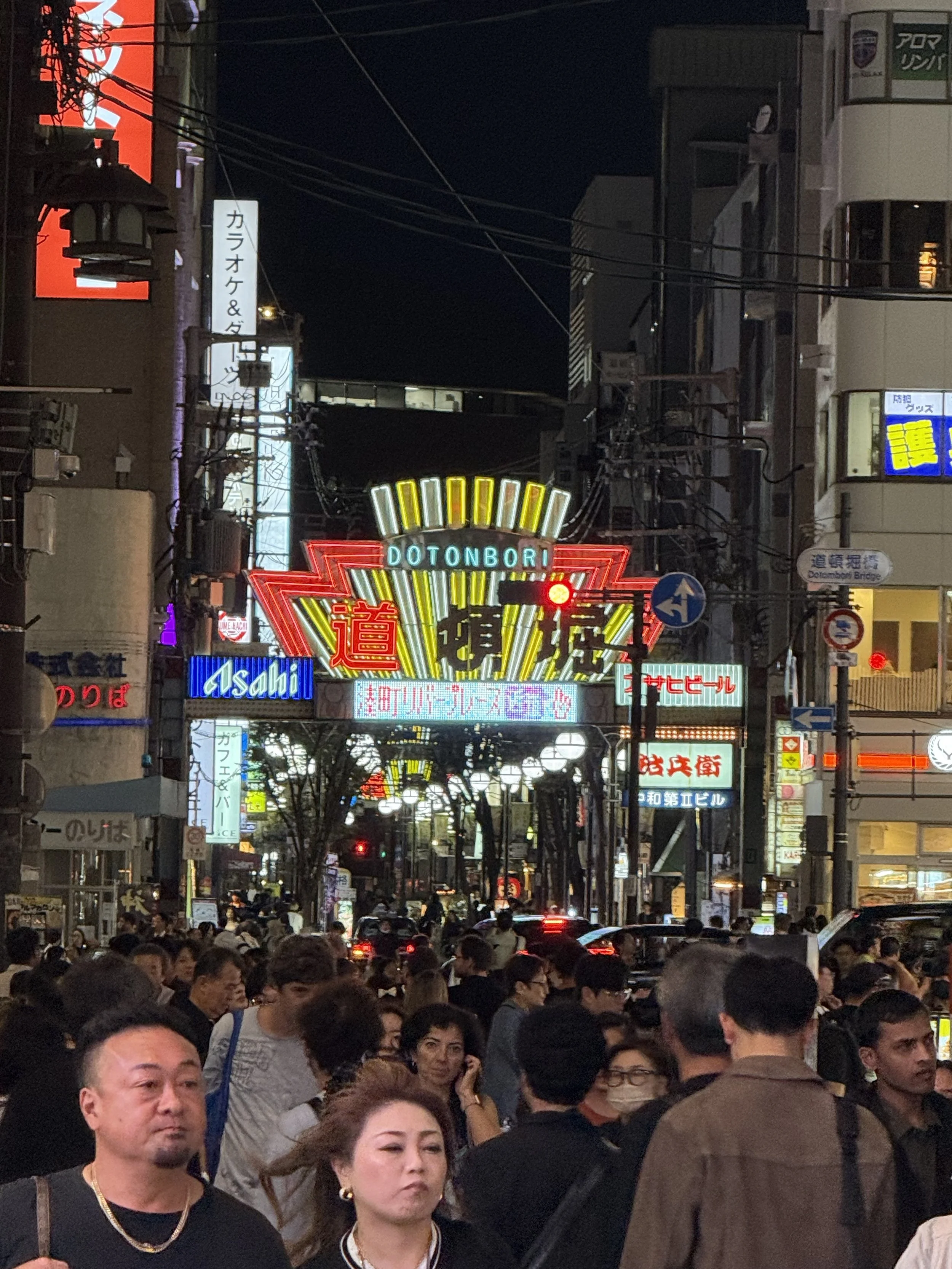Osaka, Japan
Getting There
Our first visit to Osaka was a day trip. We woke up around 4:30 a.m. to catch a cab from the hotel to Tokyo Station. The streets were quiet, the pavement slick with rain, and the city still half asleep. Tokyo’s weather was wet and gray, but I was optimistic that by the time we reached Osaka, it would clear up.
When we arrived, the main terminal was still closed. Metal barricades blocked the gates, and a few early travelers waited alongside us. About fifteen minutes later, station staff arrived to unlock the entrance. We exchanged our tickets at the turnstile and hurried through the quiet halls. Most of the shops were still closed. My mom had hoped to buy a bento box, but instead we found sandwiches and chicken nanban. Mine wasn’t the traditional version you see on menus. It was fried chicken wrapped in rice, drizzled with a sweet brown sauce, and bundled neatly in seaweed. It was the perfect early morning train meal.
At exactly 6:00 a.m., the Shinkansen pulled out of the station with the precision Japan is famous for. The two and a half hour ride to Osaka was smooth and quiet, the scenery outside shifting from Tokyo’s dense skyline to rolling hills, rice fields, and small towns. When we arrived, the skies were still overcast.
Dotonbori and Surrounding Streets
We stepped off the train at Osaka Station just after 8:30 a.m. The station is enormous, a maze of escalators, shops, and intersecting lines. We followed the signs to the taxi stand and took a short ride to the Dotonbori area, passing clean, orderly streets lined with small stores and cafés.
We met our tour guide at the Swissôtel and began our walking and train tour through Osaka.
Our first stop was Dotonbori, Osaka’s most famous entertainment and food district. The streets were already filling with people taking photos in front of the Glico Running Man, the large neon billboard of a runner dressed in white that has become one of Osaka’s most recognizable landmarks. We walked through the surrounding streets and passed Hōzen-ji Temple, where visitors poured water over a moss-covered statue of the deity Fudō-Myōō. Just around the corner was Hōzenji Yokocho, a narrow stone walkway lined with small shops and the remains of what had once been theaters.
After some wandering, I stopped at a shop and bought a chocolate Danish that looked like a cinnamon roll but wasn’t. I only took one bite before an older woman gently scolded me for eating while walking. In Japan, it is considered impolite to eat on the go, and I quickly learned my lesson. By that point, the clouds had started to break, and sunlight spilled through the narrow alleys. Because we visited during the day, we did not see the full glow of Dotonbori’s lights, but even without them, the area was lively.
Osaka Castle
Next, we visited Osaka Castle, surrounded by a wide moat and peaceful parkland. The sun was fully out by then, and the temperature had climbed. The castle stood high above the trees, its layered white walls and green-tiled roofs glinting in the light. The grounds were busy with families, tour groups, and schoolchildren in matching uniforms.
We walked up the hill to the main tower, passing stone walls and old gates that hinted at its centuries of history. Built in the late 1500s by Toyotomi Hideyoshi, Osaka Castle once symbolized Japan’s unification and still feels like the heart of the city. We explored the surrounding gardens, which offered views of the moat and the city skyline beyond. Before leaving, we took the tram back down for 300 yen per person. It played a catchy little tune that was light and childlike, the kind of melody you might hear on a children’s theme park ride. We did not go inside the castle or museum since time was short, but even from the outside, it was impressive.
Umeda Sky Building
Our third stop was the Umeda Sky Building, two forty story towers joined at the top by a circular observation deck called the Floating Garden Observatory. Admission is 1,500 yen per adult. Visitors reach the observatory by taking a glass elevator to the upper floors and then an escalator that crosses between the two towers high above the ground. The escalator is enclosed in glass, giving a clear view of the city as you move between the buildings.
The observation area has floor to ceiling windows and an open air circular deck with a full view of Osaka in every direction. The interior is modern, made of glass, steel, and polished stone, with a small café where visitors can sit near the windows.
Outside on the deck there is a Fence of Vows, where couples attach heart shaped locks engraved with their names or dates. The locks are sold in the observatory shop, and the fence lines the outer edge of the viewing platform. From there, the view stretches across the city to the horizon.
As we explored, there were still signs of the 2025 Expo that had recently ended, with banners, displays, and temporary structures that hadn’t yet been cleared away. It added an interesting layer to the visit, a mix of everyday Osaka and the afterglow of an international event.
Heading Back to Tokyo
We took local trains between each stop, which was easy once we figured out the color coded subway lines. By late afternoon, we ended up at Grand Green Osaka, a large complex near Osaka Station with restaurants and shops. We had lunch there before heading back to catch the evening Shinkansen to Tokyo.
The ride home was quiet. It had been a long day, but Osaka’s energy, bright, efficient, and full of character, lingered in my mind long after we returned to Tokyo.
Second Visit to Osaka
Arriving by Ship
Two days later, we were back in Osaka, this time arriving by sea. Our cruise ship docked around 11 a.m. at the Tempozan Pier, near the Osaka Aquarium. From the deck, we could see the building’s red and blue panels and the large whale shark mural that stretches across the front.
Dotonbori
We had the day to ourselves and planned to visit a few places we didn’t have time for on the first trip. After disembarking, we took the train toward Dotonbori. The ride was short and easy to navigate using the Osaka Metro. The streets were busy, lined with shops, restaurants, and food stalls along the canal. We spent time browsing souvenir shops and stopping for small snacks before continuing on.
Shitennoji Temple
From Dotonbori, we took the subway to Shitennoji Temple, one of Japan’s oldest Buddhist temples, founded in 593 by Prince Shōtoku. The temple was rebuilt many times over the centuries but still follows its original layout, with a central pagoda surrounded by gates, halls, and gardens. The grounds include stone walkways, koi ponds, and several pagodas that stand out against the city skyline. Admission to the inner area is 300 yen.
I went inside, walked through the courtyard, and took photos of the five-story pagoda and main hall. Wooden beams framed the buildings in straight, simple lines, and the air smelled faintly of incense from nearby offerings. In one corner of the courtyard, visitors tossed coins into collection boxes and bowed their heads in prayer before ringing a small bell.
I needed to use the bathroom and was glad to see one on site. I walked in expecting to find a regular toilet, but instead found a style I hadn’t seen before. Given its position, I guessed it was a squat toilet. After a moment of hesitation, I figured out how to use it. It wasn’t difficult, but it did require strong thighs.
Tsūtenkaku Tower
Our next stop was Tsūtenkaku Tower, a well-known landmark in the Shinsekai district. The area itself was developed in the early 1900s as a symbol of Osaka’s modernization, modeled loosely after Paris and New York. The current tower stands 103 meters tall and was rebuilt in 1956 after the original was destroyed in World War II. Admission is 900 yen.
Inside, the lower floors have small exhibits and shops selling snacks and souvenirs, including the tower’s mascot, Billiken, a smiling charm figure said to bring good luck. The observation deck offers views across southern Osaka, from the dense neighborhoods below to the high-rises in the distance. The lower streets around Shinsekai are filled with kushikatsu restaurants—places serving skewered fried food—along with pachinko parlors and neon signs that stack tightly together. It’s one of the few areas in Osaka where the city’s older style still feels intact.
Back at the Port
After visiting the tower, we took the train back to the port. The ship stayed overnight in Osaka, giving us time to rest and prepare for the next day’s adventure.

